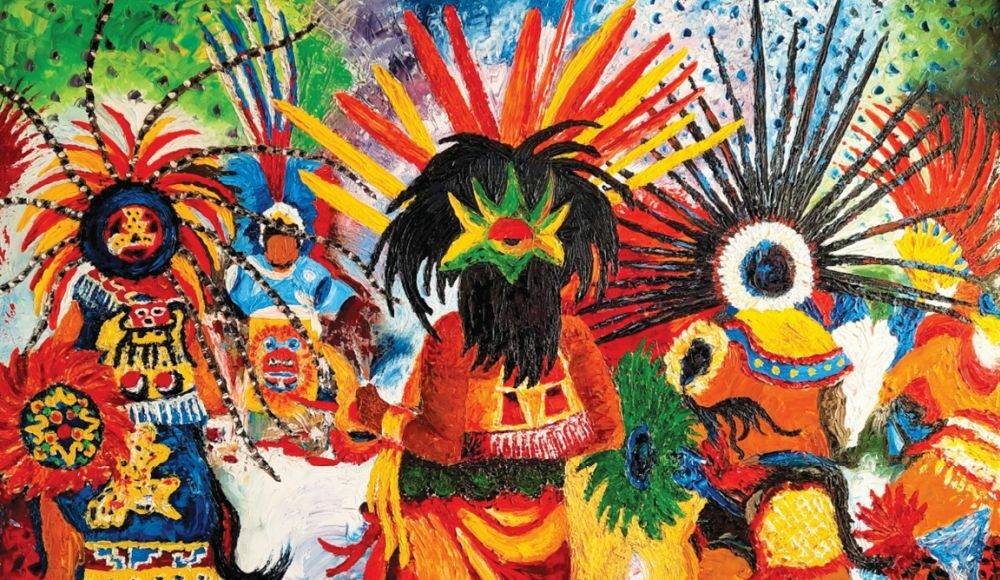In 2021, Elizabeth Jiménez Montelongo was working as Creative Ambassador for the San José Office of Cultural Affairs when she began offering free online poetry workshops.
Soon, the question arose: what should they do with all the writing these workshops had generated?
The answer came in the form of La Raíz Magazine. Initially conceived as a place to gather this work, it soon found wider goals. The founders wanted to create a bilingual publication for writing and art by people who identify as women and members of the BIPOC global majority, with an emphasis on work by people whose heritage is rooted in lands that are now Mexico, Central America, the Caribbean and South America.
“A lot of our work isn’t being published,” says Montelongo, noting that in Santa Clara County and nationwide there are very few places where work in languages other than English is accepted, let alone encouraged.
“Also the themes that we tend to write about, things that are very culturally specific to our heritage and traditions, or social issues that affect us, sometimes it doesn’t feel like that’s welcome,” she says.
This issue is reflected in Montelongo’s artwork, which is influenced by her Indigenous Mesoamerican ancestry as well as Aztec artwork and philosophy. Prior to 2020, she had primarily worked as a visual artist around San Jose. When she found herself becoming part of an online poetry community, she says she found it so inspiring that she wanted to be “a part of making it available to more people.”
Speaking via video call, I get a glimpse into her art studio, spotting a canvas depicting an Indigenous dancer painted in vibrant colors. Montelongo earned a BFA in Pictorial Art from San José State University and serves as a Board Member of Poetry Center San José and manages Roots Artist Registry, which publishes La Raíz.
Published annually, the magazine’s third edition was released in May this year, thanks to funding by the Dr. Enrique E. Figueroa’s Gente Chicana/SOYmos Chicanos Arts Fund, and has local, national and international contributors. Due to the magazine’s editorial goal of showcasing writers who might not normally consider themselves poets or artists, it includes the work of many emerging writers.
There were also so many voices that Montelongo couldn’t fit everyone who wanted to read their work into the same launch, so they are holding another one next month. The “Creative Showcase: Gente Chicana Edition Launch Part 2” will be held on Wednesday, September 20, 2023 from 6:30-8:30pm Pacific (via Zoom).
“The showcases are just awesome, hearing everyone share their writing and their artwork. Those are really beautiful experiences,” Montelongo says.
Due to ongoing issues like transport and childcare, she still feels that virtual gatherings are the most accessible option for many people. But the editors have also been hosting in-person events. In April, for National Poetry Month, they read at the MLK Library downtown, in partnership with SJSU’s Legacy of Poetry Festival, hosting an exhibition on the library’s fifth floor.
La Raíz Magazine has even tried hosting an event in a third language. Their “Poetry Workshop on Social Justice,” facilitated by An Búi, was held in Vietnamese and English. Montelongo says they intend to include more languages and communities in the near future.
The magazine also offers some financial support for artists through the annual La Raíz Art Prize and La Raíz Poetry Prize, as well as La Raíz Scholarship & Community Support Fund. The Fund distributes amounts of $250 and has been awarded to two students so far.
At the end of the day, the goal is to publish and have writers’ work be read. Editions of La Raíz can be perused for free on their website, where print copies sell for $24. A current goal is to get the magazine in more libraries, schools and bookstores. In the future, they plan to expand into bilingual poetry chapbooks and maybe one day publish an anthology. In the meantime, the poetry and art workshops continue.
To Montelongo everything they do is part of a holistic creative process.
“It all goes together. If it were just a publication there would be no opportunity for people to create new work. But the magazine is also a way of documenting all the expressions and themes that come up in the workshops. All the parts are really important.”
La Raiz Magazine
Third Issue
Out Now



